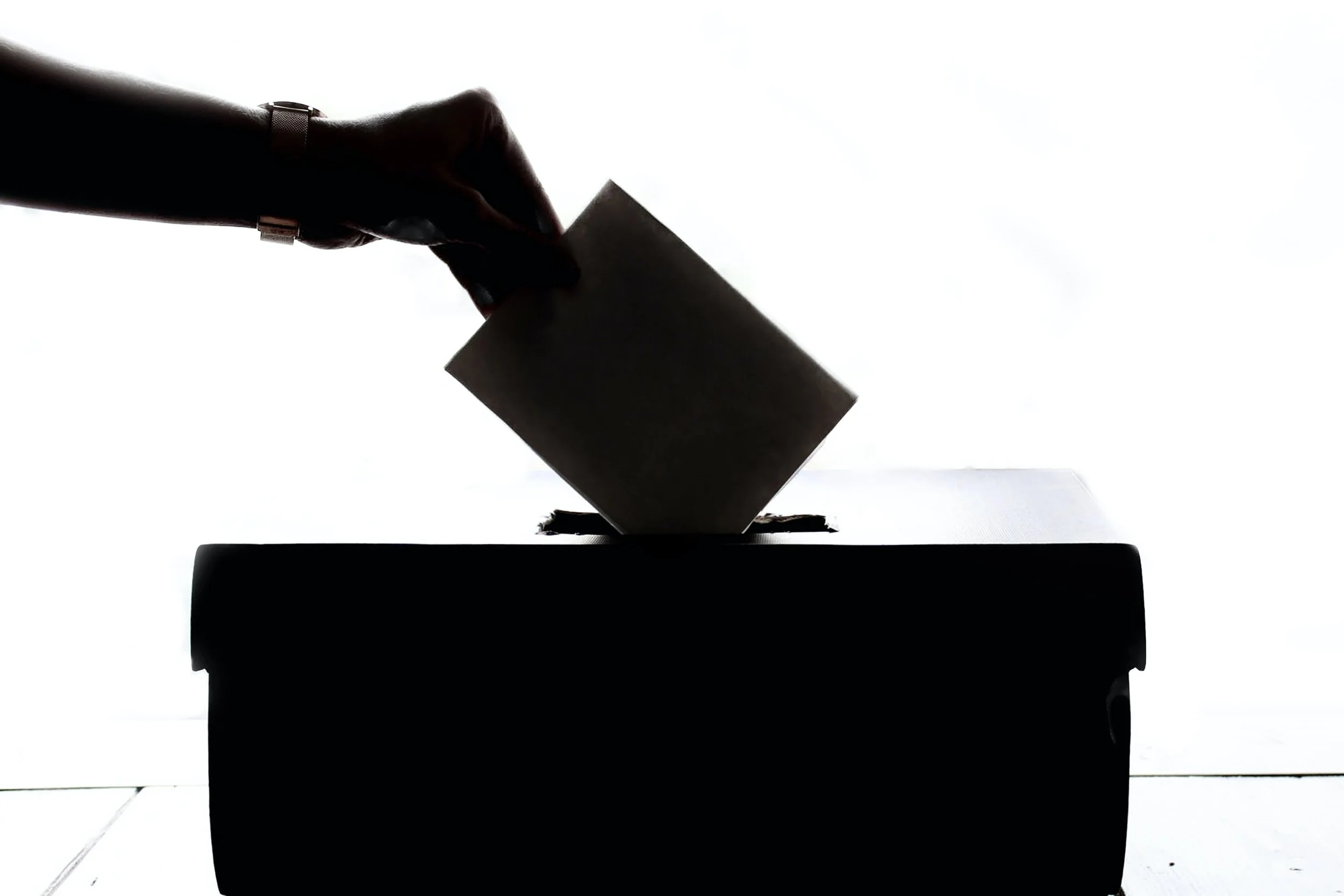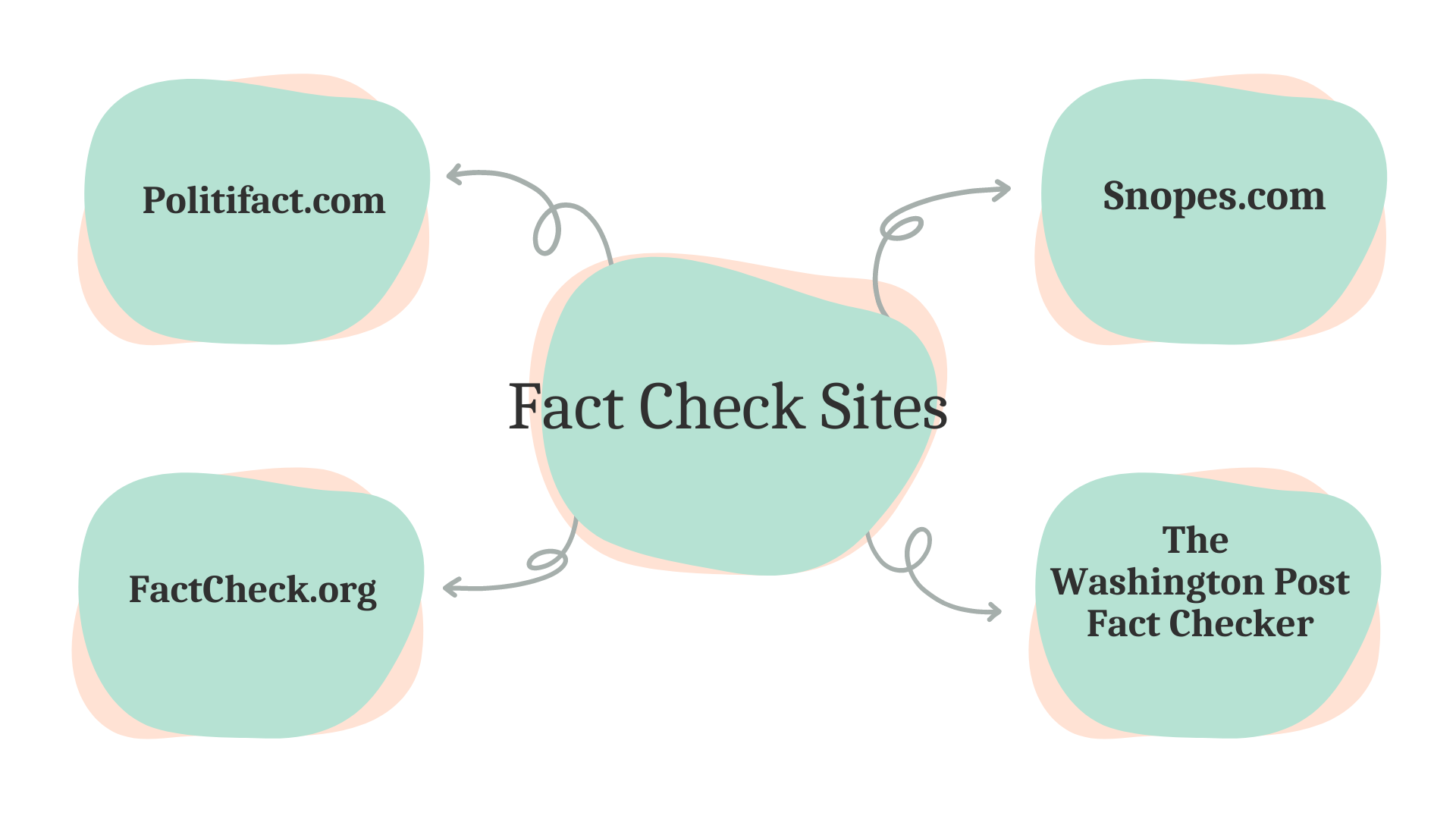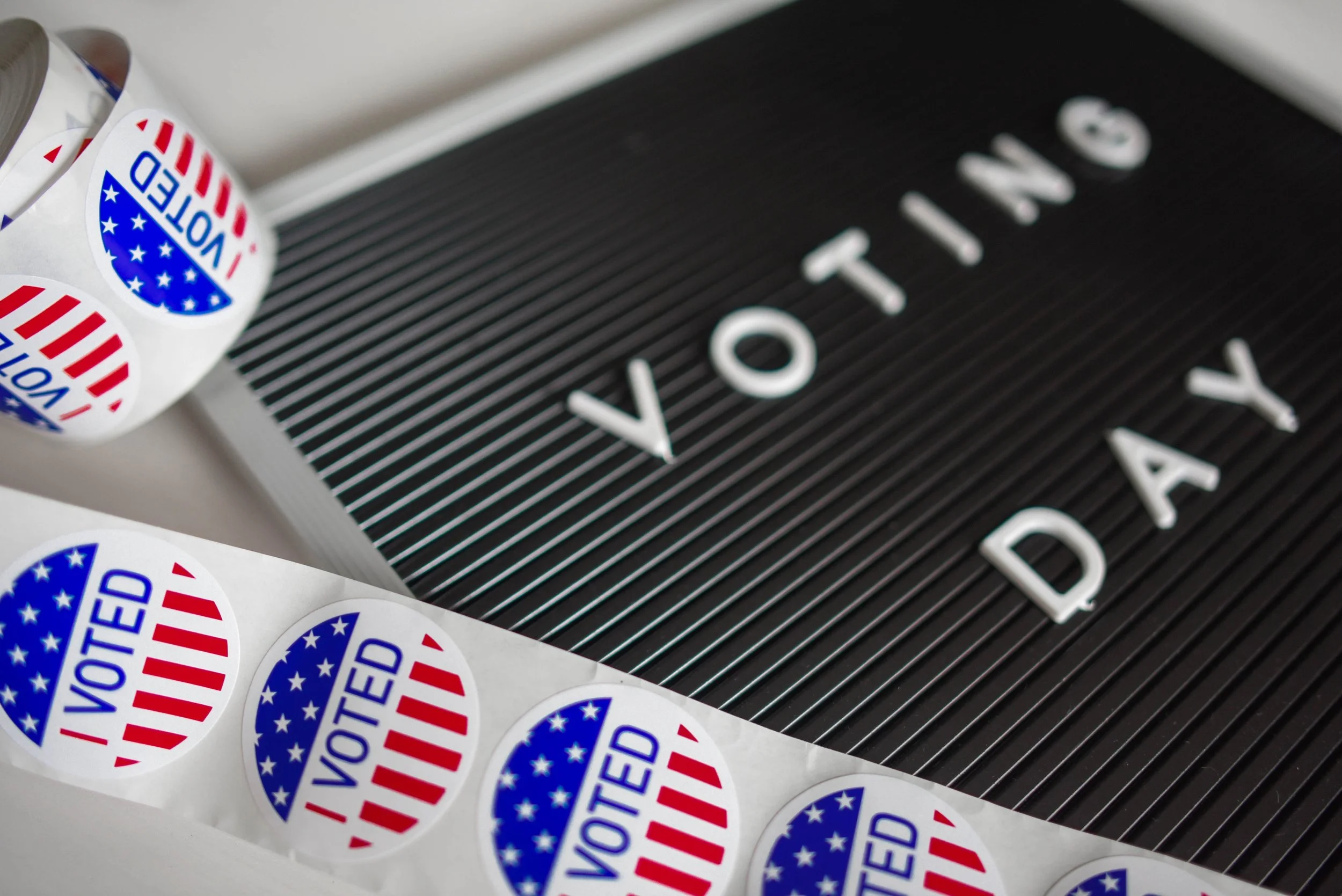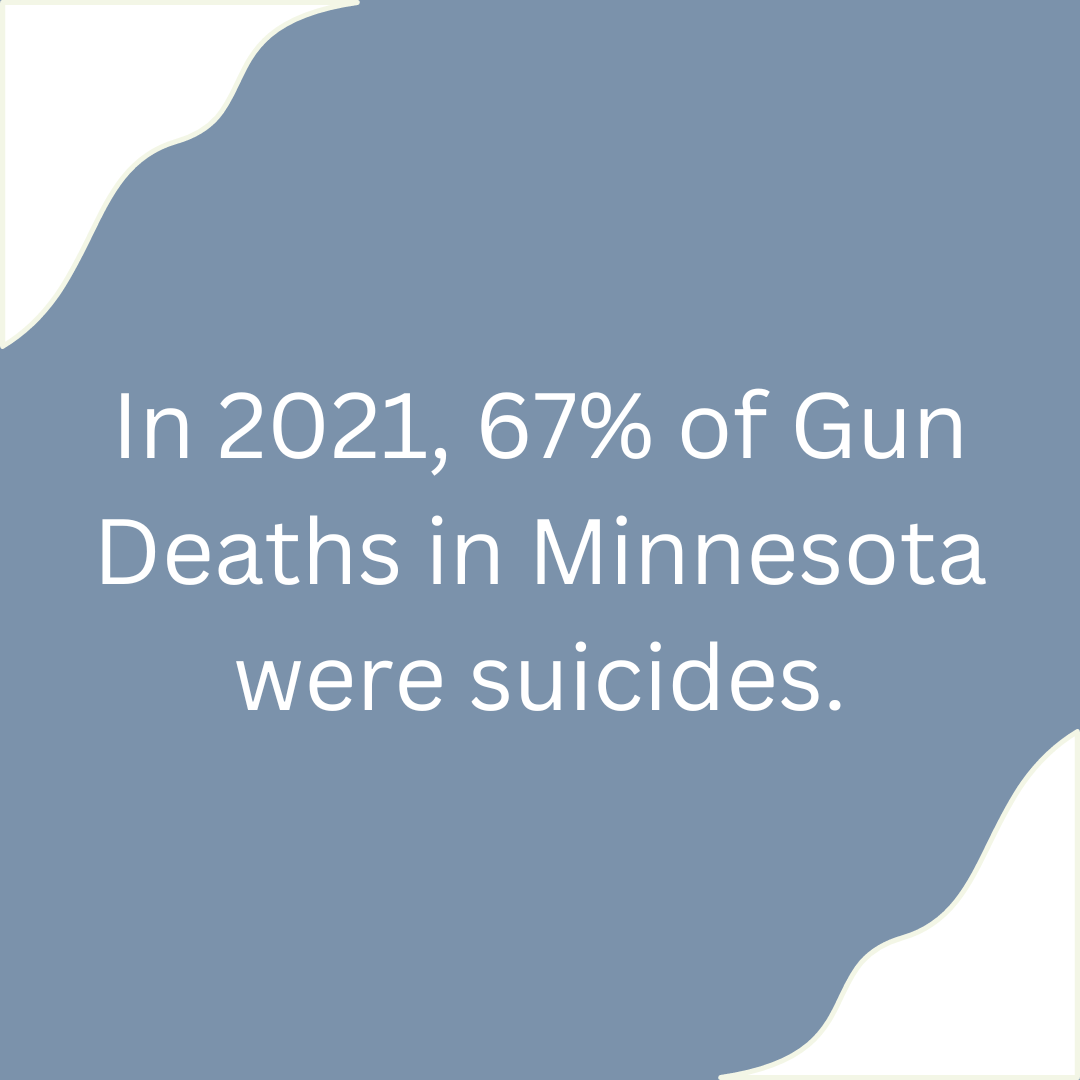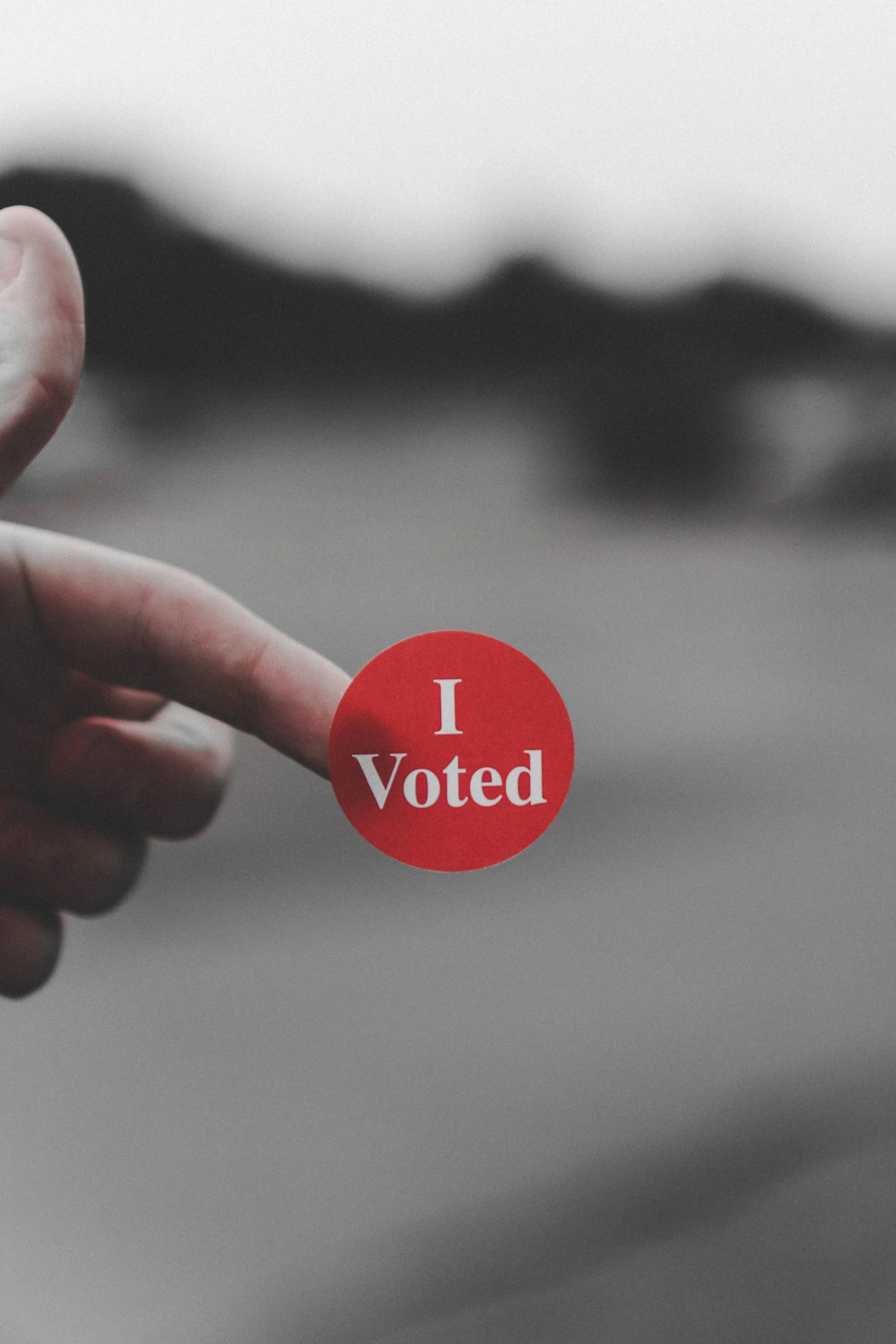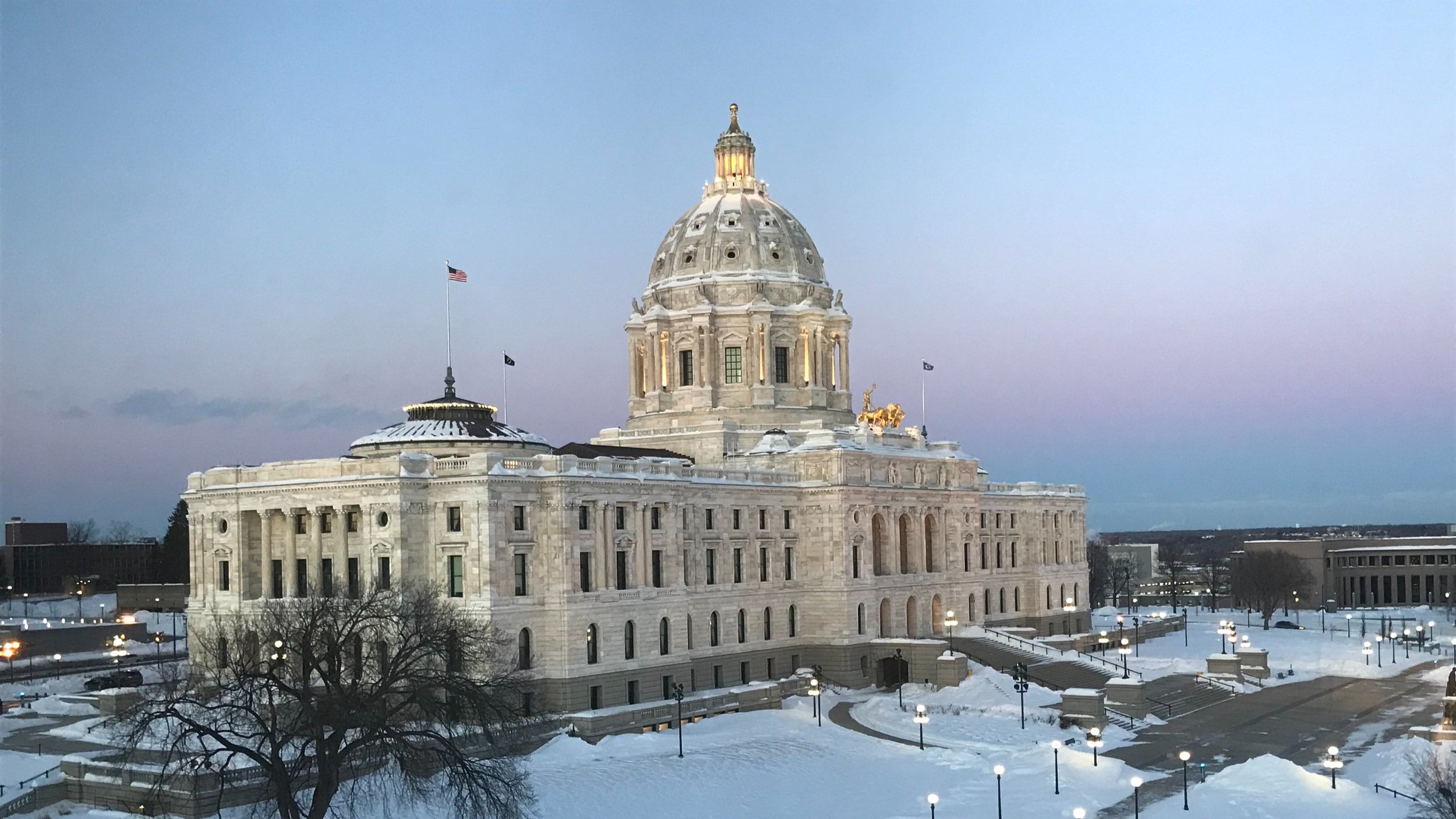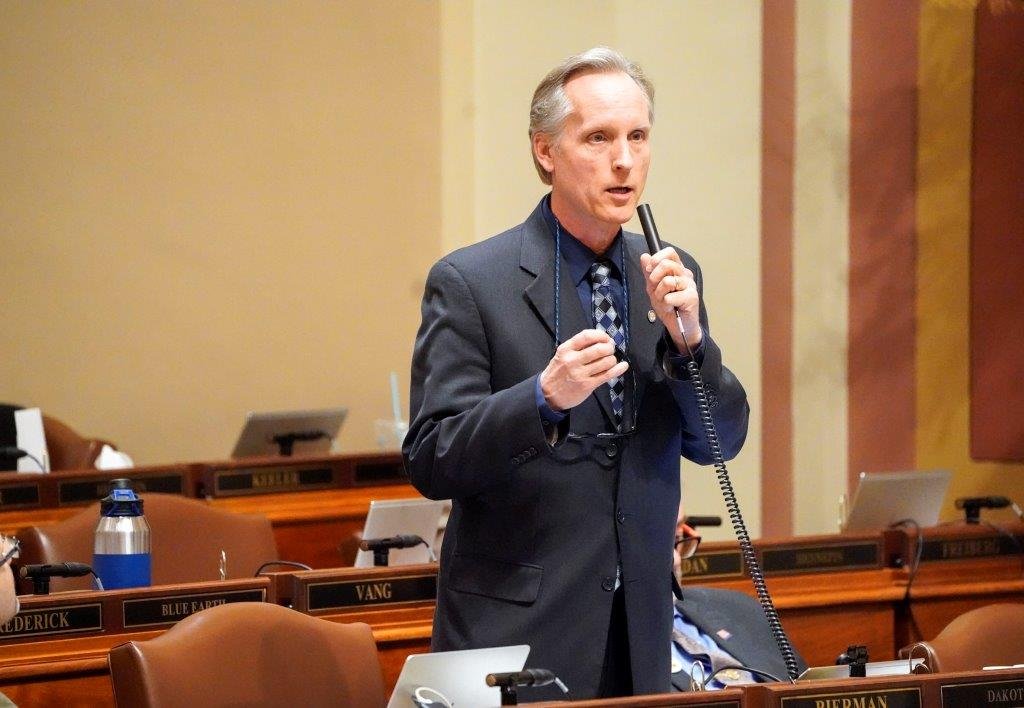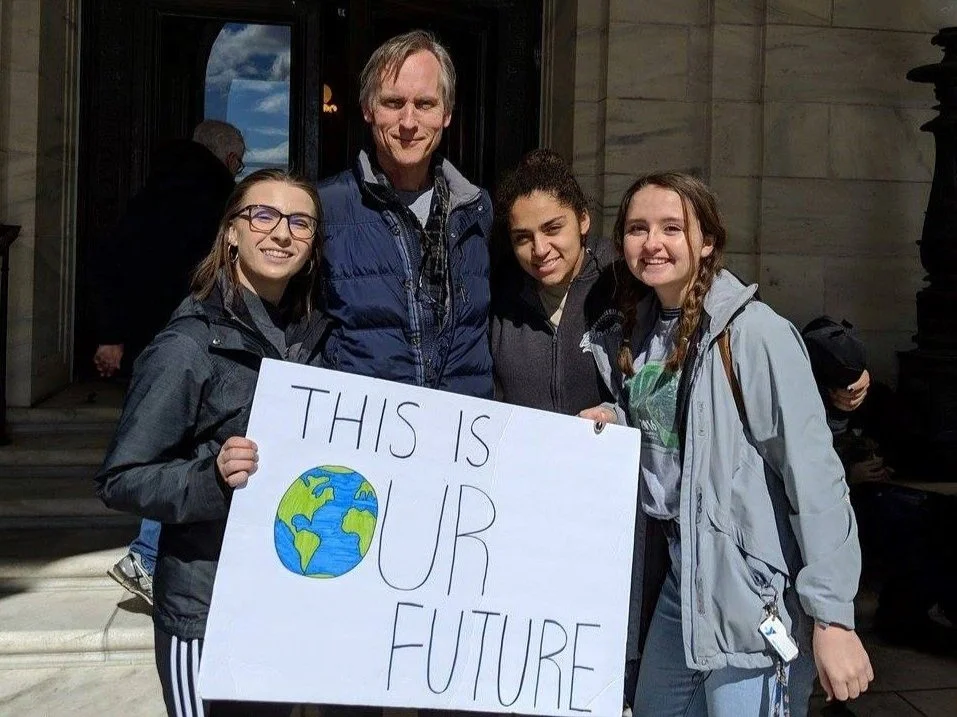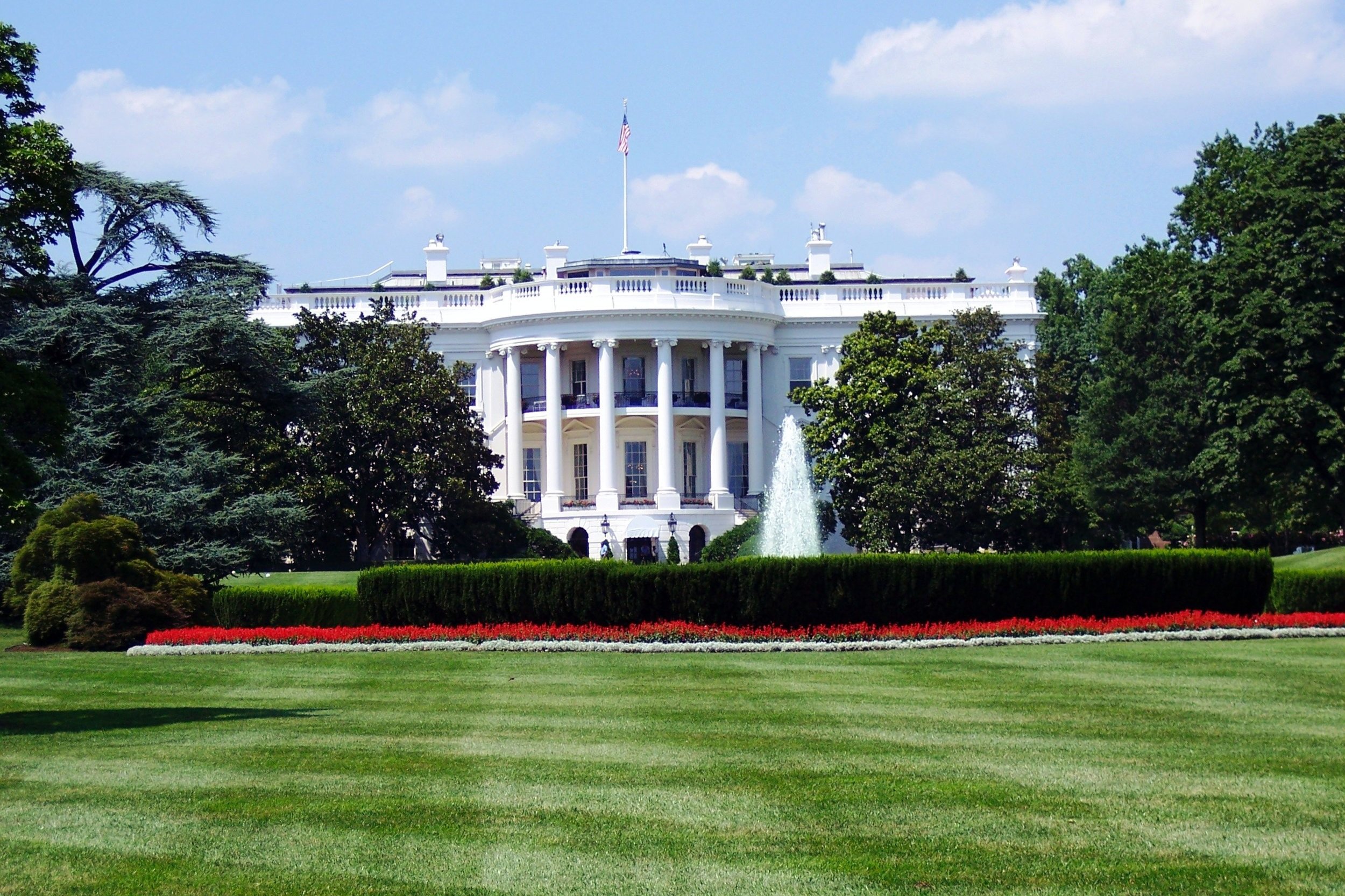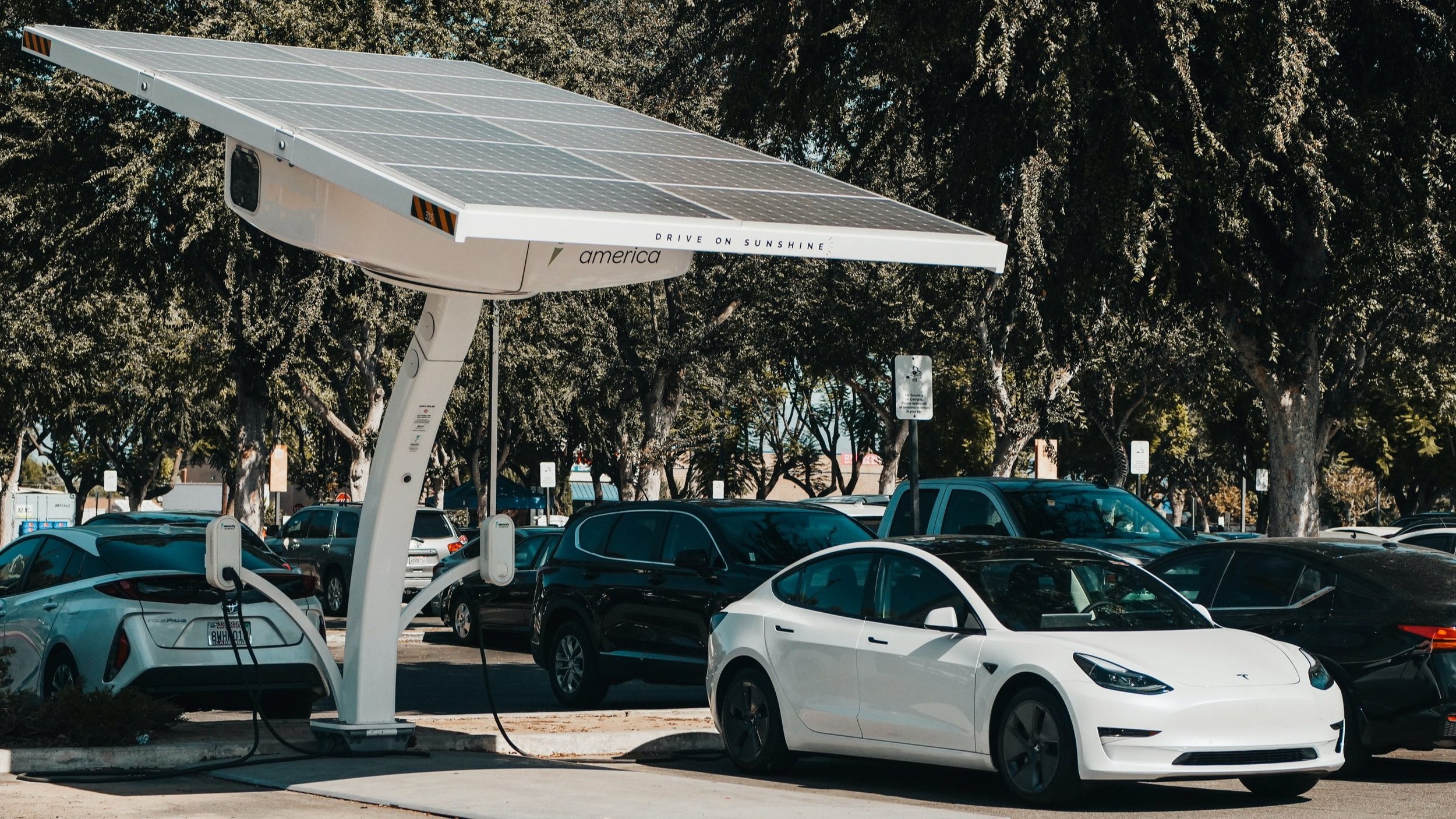Get Informed, Participate in Democracy, Vote! (10/31/22)
There is one thing in the political sphere that most everybody agrees on. And that is that there is too much divisiveness and obstructionism in our politics and government. What can be done? How do we even begin to bridge our divides?
A prime example of obstructionism was here in Minnesota this last session. We all want investment in public safety. There was an agreement made between the House, the Senate and the Governor. Minnesota was going to invest $300 million dollars to help fund local law enforcement across the state. We were going to make police recruitment and retention a priority. In the MN House I voted to support these investments. An agreement was made to use some of the surplus for tax cuts as well. The Republican lead in the Senate, however, walked away from these issues, not wanting to compromise, not wanting to share any progress with the Democrats, and the much needed investment in local public safety was left on the table. The failure to compromise, to act for the people of the state of Minnesota, reverberates across the state.
What do we do?
Everyone needs to become an informed voter. I talked to a constituent the other day. He said he was doing his research by watching the commercials to select his candidates. That was astounding to me. It is a failure of media literacy. We all see the negative advertising. Ads that twist and distort the truth. Made to instill fear. Sadly this is allowed in political ads. We have a system that allows free speech. But in politics it is the voter's job to clarify what is true and what is not. The voters task is complicated even more by the unregulated independent expenditures flooding the airwaves.
How does a voter know what’s the truth?
Some important things to consider are who is the source of an ad? Who is paying for the ad? What are the supporting sources and do they actually support the claims?
There are some great sites for fact checking. Here are a few:
Media literacy is a real and current need. Not only in our schools, but for everyone. It takes some effort. But the stakes are high. I had a voter tell me she gets all her information from friends on social media. I encouraged her to look for other sources. One being the actual candidate standing at her door, asking for her thoughts. That is a great opportunity to ask me what my priorities are, and values, what have I been working on, what will I want to do this next session for the people of Apple Valley?
Our democracy is in danger of disintegrating. One thing we can do to help improve democracy is by participation and voting. It is not politicians alone that will keep our democracy working. It is an educated and well informed electorate. And people actually getting out and voting. At every opportunity.
How do I vote?
Election Day is November 8th this year, with early voting happening now. With redistricting, your polling place may have changed. To find out where to cast your ballot, view a sample ballot, and other voting information visit mnvotes.org.
What are Red Flag Laws? (10/9/2022)
One of the issues I hear about frequently from voters at the doors is the lack of action on gun violence in Minnesota. One woman stated her question to me like this. “Tell me what your position is on gun laws, if you are not advocating for new laws to restrict guns on our streets then you are simply not sincere in your support for better public safety.” My answer was that if someone needs to receive a license to drive a car they should also be required, in every instance, to pass a background check to own a firearm. I also believe Minnesota should join the growing number of state’s who have recently passed Red Flag Law’s.
This voter fully supported both these laws and knew exactly what Red Flag laws are. Not everyone does and too many myths abound. One thing is clear. In the absence of legislative action gun violence is getting worse not better.
Six out of every ten gun deaths in the United States each year are suicides. That equates to 24,000 suicides by gun every year. In general, a person attempting suicide has about a ten percent chance of actually dying, but if there is a gun involved the risk of death increases to 90 percent. There is action we can take to impact this public health crisis.
In the last ten years, suicide by gun nationally has increased by 12 percent. Among young Americans it has increased by 53 percent. Reducing access to firearms to those at risk for suicide is an effective way to prevent suicides.
Extreme Risk Protection Orders (Red Flag Laws)
Nineteen states already have Red Flag Laws on the books (also known as Extreme Risk Protection Orders) and they’ve been proven to work. After enacting its Red Flag law in Indiana, suicides decreased by 7.5% over a ten year period compared to nationally, the suicide rate increased by 12% in the same time period.
The myth that due process is violated with Red Flag laws is just that; a myth. Case law has withstood those challenges time and again in states that have these protection orders on the books.
How the Law Works
When it is apparent that an individual is a threat to others, or may be a threat to themselves, it is permitted for family members, law enforcement or a doctor to petition a court to seek temporary removal of firearms from their possession for up to a year. First the individual in question must be notified. Then there is a hearing with a judge. After the hearing there is a period of time before the final order is determined.
Red Flag laws provide law enforcement and family members a tool to intervene, to provide a reprieve at a time of crisis, when access to firearms poses a threat. Red Flag laws are designed to protect household members, law enforcement, the general public, as well as the individual.
Our current gun laws often allow access to firearms to people with dangerous behavioral tendencies. Extreme Risk Protection Orders are designed to address this problem in a meaningful way.
Vote to Support Candidates that Support These Laws
My voter at the door appreciated my position on this public safety issue. She affirmed her position that she will be voting for candidates that support action on gun laws and I had earned her support.
Most law abiding gun owners I speak to also support Red Flag Laws. My number one goal is to keep guns out of the hands of people who should not have them. Instituting Criminal Background checks and Red Flag laws by themselves will not solve the entire problem of gun violence. But statistically speaking, both will save lives and reduce gun violence. And progress in our public safety is what most voters are demanding from their elected officials. As long as I am in office I will be part of that solution, not part of the problem.
(Please note: If you or anyone in your life is in crisis, the National Suicide Hotline is 988).
Our next blog will be published on Sunday, Oct. 23rd.
Pain Awareness Month - Allowing Doctors to Treat Patients (9/25/2022)
Chronic and intractable pain afflicts over 60 million Americans. It is a pervasive problem throughout modern society. The individuals who suffer from chronic pain have faded into the background as the opioid overdose crisis has taken over headlines.
September is Pain Awareness Month and I would like to put a spotlight on the multi-faceted issue that is chronic pain.
Chronic Pain Patients Face Limitations
Patients facing chronic and intractable pain have many limitations in their day-to-day living. Frequently they cannot even get out of bed without severe pain. This limits their ability to hold down a job, and even to perform tasks such as cooking, cleaning, and yard work.
Treating pain, like much of modern medicine, is a process to find what is effective for each individual patient. For some patients effective surgical procedures exist. For others there are no known viable procedures available for their ailment yet and prescription opioids remain the best stable form of pain reduction therapy.
The Opioid Epidemic
The opioid crisis complicated the treatment for pain patients dependent upon opioids for their well-being. The Center for Disease Control (CDC) Guidelines published in 2016 were designed as guidelines for prescribing in an effort to reduce opioid related deaths by overdose. Since these guidelines were introduced, opioid prescriptions have been reduced by 60%. Unfortunately, this has not had the desired effect on the opioid epidemic. The opioid epidemic has gotten worse and many pain patients have been collateral damage as they have been tapered to arbitrary lower dosage prescriptions or force tapered off the very prescriptions that have helped alleviate their pain conditions. The American Medical Association stated in 2021 that the guidelines have been devastating for patients with pain and urged removal of arbitrary thresholds.
Minnesota Legislation Signed into Law
This last session, I authored the bill to help Interventional Pain Physicians do their work and chronic pain sufferers to be treated as individuals when it comes to prescription opioids. Diagnosed pain patients, palliative care patients, rare disease and cancer patients are supposed to be exempt from forced tapering.
This bill, which passed both chambers with bipartisan support and was signed into law by the Governor, is about letting medical doctors do their work. It is also about keeping legislators and bureaucracy from making medical decisions.
Forcing people to live with pain is not good health care. We need to make sure trained pain physicians are allowed to treat their patients with opioids when medically necessary and the benefits outweigh the risks.
Thank you for reading! You can read our next blog on Oct. 9th!
Paid Family Leave (9/11/2022)
In 1993, the United States signed the Family Medical Leave Act (FMLA) into law. The FMLA affords employees that work for a covered employer the right to take time off for things such as having a baby or taking care of a sick loved one. It does not, however, afford employees the right to get paid during that time. Paid Family Medical Leave in Minnesota would change this.
As a country, 84% of people support a Paid Family Medical Leave policy. As a business owner, I believe this policy would benefit and improve my business. As a legislator and a candidate, I talk about this issue frequently as it would impact every demographic.
Where the United States Stands
The United States is an outlier on this issue and has been for quite awhile. Including Papua New Guinea and a few islands in the Pacific Ocean, we are among the few countries of the United Nations that does not have some sort of universal Paid Family Medical Leave.
How it Would Work…
The bill is designed to pay employees a partial wage based on income level - (60-90%). The money would be covered on a similar platform to the unemployment insurance program. The Department of Employment and Economic Development (DEED) would administer the plan which would help alleviate extensive paperwork for small business owners. Many small businesses generally lack the capital and the scale to provide earned benefits like Paid Family Medical Leave, even when business owners want to provide those benefits. The plan would be funded by small employer and employee contributions of 0.31% of employee earnings which make the PFML Act fund self-funded. Similar policies in WA, MA, CA, NJ & RI cost on average less than $2.00 per week per employee.
This system would be administered by the state, and would not create a burden of paperwork on employers. Any leave would have to be approved through the PFML program, not the employer. Benefits would be comparable between my small business and a large corporation, leveling the playing field to attract and retain employees.
Cost
The price would be competitive. There is nothing on the market that you can create or buy from an insurance company that would be comparatively affordable. The cost to the employer would equate to buying each employee one coffee each week. And that cost could be partially shared with the employee.
What it Entails…
The bill that has been proposed now, would entitle employees up to twelve weeks of paid leave for the birth of a child, care of a sick spouse or elderly parent, treating a medical condition and other family medical needs. In states where a plan comparable to this is in effect, the average time taken off is closer to four weeks than twelve.
What the Other Side is Saying
Opponents of this plan are concerned that all workers will take off all at the same time and state that their businesses cannot run without key employees. The reality is that key employees get sick too. Chemotherapy treatments can’t wait. The truth of the matter is that all employees will have personal needs sooner or later, but if they know their job is secure, they will return as fast as possible. When employees know they are valued and supported, they develop more allegiance to their workplace. In addition, employers do not have the burden to pay the partial wage that employees on leave receive. Employers can use the money they are not paying their employee on leave to hire part time help or use it for other purposes. As shown in other states, workers only take time off that they truly need. Minnesotans want to work and allegations of rampant abuse are not born out by the experiences in other states.
I Am a Small Business Owner
Workers should not have to choose between their families and their jobs. As a business owner, it is important to me that my employees are able to take care of themselves and their families. Better economic security on the job engenders a more dedicated staff with less turnover.
Paid Family Medical Leave is a family values issue. It will bring more workforce stability within small businesses. When you have stability in your workforce, your business has a better chance to flourish. Research has shown that Paid Family Medical Leave is linked to better health outcomes for children and mothers. But it is designed to help all family members. Grandparents often need assistance too.
Our economy in Minnesota, with a declining workforce, desperately needs workers. Access to a Paid Family Medical Leave plan has shown a significant return of more women to the workforce. If Minnesota enacted this policy we would also attract workers from surrounding states. Our economy is expanding faster than our workforce so we need to take any opportunity we can to gain valuable employees for our small businesses.
The Time Has Come
The time has come for Paid Family Medical Leave, and Republicans know it too. One of the most impactful things that happened at the end of last session is that the Republicans came out with their own version of Paid Family Medical Leave. We finally have a starting point from which to have real discussions on how to move forward with a policy. From this common ground we need to do the work and get this done for the benefit of all Minnesotans and their families.
Look for our next blog on Sunday, September 25th.
Higher Ed or Higher Debt…(8/28/2024)
Higher education has always been costly but never this expensive. In the 1970s, if students worked hard over the summer, it was possible for them to make enough money to pay tuition for the following school year. That is just not the case anymore, and hasn’t been for a long time. College costs have increased by 169% over the last four decades on average, while earnings for those aged 22-27 have increased by just 19%.
University of Minnesota - Twin Cities
The cost of attendance at the University of Minnesota - Twin Cities Campus this upcoming year is $16,108. This is before books, supplies, or living expenses. With the cost so high, students often have no choice than to look for student loan opportunities in order to pay their tuition and other expenses. The average student loan debt for Minnesota students graduating with a bachelor’s degree in 2020 was $25,000. Many students hold substantially more debt than that.
The Results of High Student Loan Debt
The high amount of student loan debt in our society has had egregious effects on our economy particularly when it comes to Millennials' contribution. Student loan debt is crushing the ability of many graduates to contribute to the economy across the state. High debt impacts their opportunity to buy a home, start a family, start a business, and work towards financial stability.
Effect on the Minnesota Economy
All Minnesotans deserve a quality education. The importance of a good education is imperative for the well being of our citizens, the vitality of our state economy and the continued health of our democracy. Our founders wisely embedded a public education for the citizenry in our state constitution.
Here we are in 2022, with a shrinking workforce, an economy that we need to expand, and a reticence among lawmakers to invest in our citizens. After decades of reductions in educational support by federal and state governments, students have faced rising tuition costs and increasing debt load to achieve a post secondary education. This loan debt impacts the lives of young people starting out and directly affects our economy.
Grants Available to MN Students
We need to recruit and incentivize students to study and train for high demand careers and professions facing workforce shortages now and into the foreseeable future. And we must not allow any student with the will to aspire to be denied educational training due to cost. Professions such as teachers, public safety officers, emergency responders, personal care attendants, nurses, social workers and psychologists are all in short supply. Increased access to the student grant program is a key strategy to assure access to more Minnesota students from low and middle income families. Combined with the "Land of 10,000 Opportunities" grant program, we had a formidable plan to address workforce needs by helping our students achieve their educational goals and incur less debt while doing it. Unfortunately these bills were not successful last term and our workforce needs and the needs of students have been postponed yet again. The economic and racial disparities faced within our state need to be addressed head on and we can target resources to close these gaps while simultaneously meeting the needs of our people.
Biden’s Executive Order
The new executive order that President Biden signed this week is definitely a step in the right direction. It will give much needed debt relief to former students across Minnesota and the country. It is my belief that we can still do more to make higher education more affordable for the students of today and tomorrow. Student debt has gotten out of hand, with Minnesota borrowers owing more than $29 billion in student loan debt. Burdening our students with such debt is not good educational or economic policy and serious solutions are long overdue. We must do more.
Look for our next blog on Sept 11th!
Special Education Cross Subsidy Explained (8/14/2022)
In the 1970s, the federal government passed a law in relation to the American Disabilities Act (ADA) - this law stated that school districts were required to provide special education services to all students in need. The law was a mandate designed to ensure special needs would be met and entitled all students to a quality education. The law also stated that the federal government would cover 40% of the cost for schools.
While the law indicates that the federal government will provide 40% of the cost to provide special education, Congress has severely underfunded this mandate. In Minnesota, school districts have typically only received 10% to 14% of the cost required to fund special education.
The General Fund
A school district’s general fund is where most of its money resides. This fund is used for general costs such as energy, staffing, and textbooks. It also provides essential services to students, such as counseling and mental health services.
An Underfunded Mandate
When the federal government underfunds the law requiring schools to fully fund special education services, it means that those special education costs have to be paid out of the general fund. This results in less funding available for staffing and other essential school needs.
Less money in the general fund inevitably leads to cutbacks in schools. For instance, it can be the cause of larger class sizes and fewer extra-curricular activities. When schools cannot afford all of the staff they need it results in larger class sizes. Reducing staff often results in lower tiered teachers (newer teachers) being the first to be let go. This leads to a constant turnover of professional educators. Special education students suffer too, as some are only in special education for 20% of the day; the rest of the day they are in class with the general student population and these cutbacks affect the education of the entire student body.
How This Affects Minnesota
Every single school district in Minnesota is affected by the cross-subsidy deficit. In ISD 196 (our home district) there is a 25 million dollar deficit. In Rochester that number is 19 million. Covering this underfunded mandate from a schools general fund is required and affects all school services across the budget.
It’s What Schools Want
I spoke to school districts across the state, and it was clear that a large number of school districts list the funding of the special education cross-subsidy as one of their top priorities.
Legislative Fix…
This last year, Minnesota had over a 12 billion dollar surplus. It was a great opportunity to be able to use some of that money to help shore up Minnesota’s schools. I co-authored a bill that would have reduced the special education deficit by up to 40% and this passed the house.
Unfortunately, an agreement could not be reached with the republican controlled senate.
I believe this is an issue that should be addressed in a special session this year. It’s what schools and communities want and need. This money could free up funds for schools to provide more essential services to students. This would be a wise and prudent investment for Minnesota and would be one of the best uses of our state’s historic surplus.
I will continue to advocate to return in special session and complete this work for our education system. We have kicked this can down the road for too long. Minnesotans expect their representatives to solve problems. I am ready to get back to work and deliver for all our communities across the state.
Look for our next blog on Sunday, August 28th!
Solar Energy is Our Future (7/24/2022)
Have you been stressed about your energy bills this year? Many people are - fossil fuel energy prices are a very volatile commodity around the world. Right now wind power is the cheapest form of energy that exists. All of our major energy producers are moving away from coal to build more wind turbines because of the cost savings. Energy producers are also building and planning for more solar arrays. Solar energy is projected to become cheaper than wind energy within just a few years.
There are a number of legislative proposals - some that have passed, some that have not - that would assist individuals, schools and businesses to utilize and reap the benefits from solar power.
Solar on Schools
One program that has been popular around the state of Minnesota is the Solar on Schools bill. I co-authored this bill that passed in 2019. This legislation allocates money for schools to install solar on their roofs. Schools can apply for funding based on their need. This program is so popular that allocated funds ran out in a matter of months!
There are many reasons a school may choose to install solar panels, but chief among them is energy costs. After staffing, energy is typically the most costly expense a school incurs. Therefore, investments in solar energy will free up much needed funds in our schools. Up to 75% of current energy costs could be reallocated for classrooms.
In the US, K-12 schools spend 6 billion dollars a year on energy costs. For Higher Education that number is 14 billion dollars. Do the math and you realize what a significant opportunity Solar programs provide!
In Apple Valley, the School of Environmental Studies is installing solar panels on their building. This will save the school money as well as significantly reduce their carbon footprint.
Benefits of Solar on Schools
Beyond the significant cost savings, there are educational benefits for students when solar energy is integrated into the curriculum. Solar panels can be used as a teaching tool for a whole host of subjects including school economics, the energy economy, meteorology, math, and environmental impacts of our energy usage. The program provides a real life opportunity for students to learn about jobs being created in the green energy economy. Finally, with the decreased use of fossil fuels for our energy generation, there are the added benefits of better health (lower incidence of asthma in children) and a decrease in environmental degradation.
So many schools have interest in this program that extra funding is critical. Unfortunately, the bipartisan bill that I co-authored and was created to add funding to this program in 2022 fell victim to gridlock and will need to be revisited next session.
Solar Tax Credit Program
We have learned about solar for schools, now let’s consider individual homes and businesses. If you are interested in reducing your own energy costs on your home, business or farm, there is a proposed Solar Tax Credit Program. If you install a full system of solar panels on your roof, you would be able to apply for a tax credit of up to $2500. It applies to homes, businesses, and farms - although businesses and farms are eligible for a larger tax credit depending on their investment.
This legislation has proved controversial in Minnesota for the last few sessions, but the reality is that Iowa has had a similar program since 2016. Minnesota’s bill was modeled after Iowa’s. Every year this program in Iowa sells out and there is a waiting list by mid-February.
This program has been so successful in Iowa that they now have solar in every county. It also creates jobs and local economic activity across the state of Iowa. The truth is that with Minnesota’s lack of funding in this area, and Iowa’s success, many jobs from Minnesota are heading down to Iowa. With this program, Minnesota’s solar companies would benefit, jobs would be created, and millions of dollars of economic activity would accrue across the state.
Proposed Legislation
I authored the bill that would fund the Solar Energy Tax Credit Program in my first term. I am determined to carry the bill again and see it passed. There is bipartisan support for this bill and for the benefit of our economy, our environment and our health we need more clean energy in Minnesota. I am committed to doing my part as a member of the Minnesota House.
Look for our next blog on the second Sunday of next month, August 14th!
Energy and Weatherization (7/11/2022)
Energy prices are volatile and many people are looking into alternative ways to save money on their energy bills. One effective way to do this is by weatherizing your house and your property.
What is Weatherization?
Weatherization is essentially protecting your house and property from the outdoor elements. In Minnesota, it can include ceiling air leaks, insulation, and furnace repairs. Insulating your house from these elements means that you can save up to 30 percent on your energy bills.
Weatherization saves money for both the consumer and the state. Weatherization programs create jobs. They also increase economic activity in counties where these weatherization upgrades are taking place.
So then, What is Pre-weatherization?
Pre-weatherization is just what it sounds like; repairs that need to be made prior to weatherization upgrades. These required repairs generally include things like asbestos and mold removal, window replacement and roof repair.
Weatherization Funding
The Federal Department of Energy provides funding to the states for low income families to weatherize their homes. The elderly, disabled, and families with young children are prioritized over others. About 50 percent of those who apply are immediately disqualified as a result of pre-weatherization repairs that need to be done on their homes first.
Of the 20 northern states that provide weatherization funding, Minnesota ranks 16th (that’s the bottom 25 percent for those of you who don’t love math). How it works is that the Department of Energy distributes money to states each year to award weatherization grants to low-income homeowners. The state, as of now, sporadically adds additional funds. At current funding levels it would take nearly 300 years to fulfill all the eligible requests for funding. Only 8-10 percent of those who qualify actually get any funding due to the significant need.
The Weatherization/Pre-Weatherization Bill
This past session (2021-22) I authored a weatherization bill. Pre-weatherization was a component of that bill. This funding would provide money for the required renovation on homes before the weatherization process. The biggest benefit of the bill is that deferrals of homes that do not qualify for weatherization would be reduced. The bill would also increase the number of trained weatherization professionals around the state - meaning it would literally create jobs.
The bill, when it passed the House, would have allocated an additional $60 million to the weatherization fund. Once it got through the Republican-held Senate, however, it only allocated an additional $16 million. Despite there being a deal on the weatherization bill, the omnibus bills did not pass at the end of session.
This sort of investment saves us all money. It creates jobs, reduces greenhouse gas emissions, conserves energy, and has bipartisan support. We will get back to work next year and get this done!
Look for our next blog July 24th!
Mining in Minnesota (6/26/2022)
Northern Minnesota has a long, successful history of taconite and iron ore mining dating back a century. There is plenty of evidence that these types of mining are not detrimental to the environment.
Minnesota has no evidence, however, of environmentally safe copper/nickel mining. There is no research to back up the claims that Polymet is making about the safety of their proposed mines.
Copper and Nickel Mining
Copper and nickel mining is substantially different from the taconite and iron ore mining that has traditionally been done in Minnesota. Extracting copper and nickel from the earth had been deemed the most toxic industry in the country by the Environmental Protection Agency (EPA).
Toxins
Copper and nickel mining involves sulfide ore. When sulfide ore comes into contact with oxygen or water in the atmosphere, it creates sulfuric acid. Sulfuric acid leaches out heavy metals and chemicals from mined rock to produce acid mine drainage.
This toxic drainage is contained in a holding pond and builds up over time. The dams that are created to hold it too often fail.
Polymet’s Proposal
The dam proposed for the Polymet mine is illegal in other countries due to failures, collapse, and creating environmental damage as well as human deaths.
The current proposal in Minnesota would leave the Minnesota taxpayers responsible for payment of any environmental clean up that is required.
Glencore
The parent company of Polyment is Glencore. This company has a trail of lawsuits from around the world. This is a result of environmental degradation and clean up costs. Glencore refuses to put their name on the contract in use in Minnesota, and uses Polymet as a front company.
Glencore could allow Polymet to go bankrupt after they reap the rewards of a decade of mining. This is their typical mode of operation - they would then leave Minnesotans responsible for the clean-up of their messes.
Legislative Action
To combat the awful record of the Glencore company, I am the co-author of the Prove it First Legislation. This requires the mining company to demonstrate one place in the world where they have successfully mined copper nickel without causing environmental degradation and additional costs to local governments.
Until they can prove it first, we need to protect the environment in the area where there is 20% of the cleanest fresh water in the country - our natural treasure that is Northern Minnesota, and the economic engine of the tourism industry for the area.
Thanks for reading! Look for our next blog on Sunday, July 10th.
Clean Cars: Minnesota Edition (6/11/2022)
Clean cars mean cleaner air and better health for us all. While Clean Car legislation is known to have been championed by California their laws have no jurisdiction here in Minnesota. Our state laws will continue to be passed in St. Paul (obviously federal law is made in Washington D.C. and will continue to be).
Federal Clean Car Standard
While the Clean Car standards began in California, they were passed into federal law during the Obama Administration. These standards continued to be in place from 2012 to 2020 and were widely supported. They applied to Minnesota car dealers as well as auto makers and dealers across the country.
The Minnesota Clean Car standards are simply an extension of what Minnesotans already followed under the federal law that was in effect from 2012-2020. There are not any parts of this legislation that go any farther.
Clean Car Standards in Minnesota
Currently, Minnesota is one of fourteen states that have resumed the Clean Cars standard for automobiles. Some of the other states include Pennsylvania, Arizona, Washington, Colorado, and Maine just to name a few.
By enacting this standard, the state of Minnesota will be a focal point for the deployment of more Low Emission Vehicles and Zero Emission Vehicles. These Clean Car standards will lead to more options for consumers, with automakers targeting Clean Car states. We know that enacting these standards will have these effects because we have seen it happen in other states.
Saving Consumers Money
Saving money in this economic environment is on the mind of just about everybody. With inflation increasing and gas prices skyrocketing, the Clean Car standards will leave the consumer with more opportunities to save money. Electric vehicles have been shown to save consumers thousands of dollars over the life cycle of the cars. And just think - with more electric vehicles on the road the air will be cleaner to breathe for everybody!
Minnesota vs. California
Many are worried because they’ve seen the scope of California laws. Some of their laws are outside the scope of the Clean Car standard - no additional requirements can be added to the Clean Car standards in Minnesota.
It should also be stated that Minnesota has no law to eliminate sales of combustion vehicles as California does. As is stated at the beginning of this article, all decisions dealing with Minnesota will continue to be made in St. Paul, by our Minnesota State Government.
Electric Grid Concerns
In the advent of more electric vehicles taking to the road in Minnesota, many have been concerned about grid reliability. The fact is, that electric vehicle charging will be beneficial to our electric grid - there is excess capacity in the electric grid now and more demand will actually increase stability.
In reality, a higher capacity from more electric car charging may result in lowering customer rates all around. This is because more volume lowers the cost per unit in regards to electricity. In addition, most charging will be done overnight which is during off peak hours. Programs already exist to allow consumers to receive a lower energy cost for consumers to charge at night.
Look for our next blog to be posted on Sunday, June 26th!


